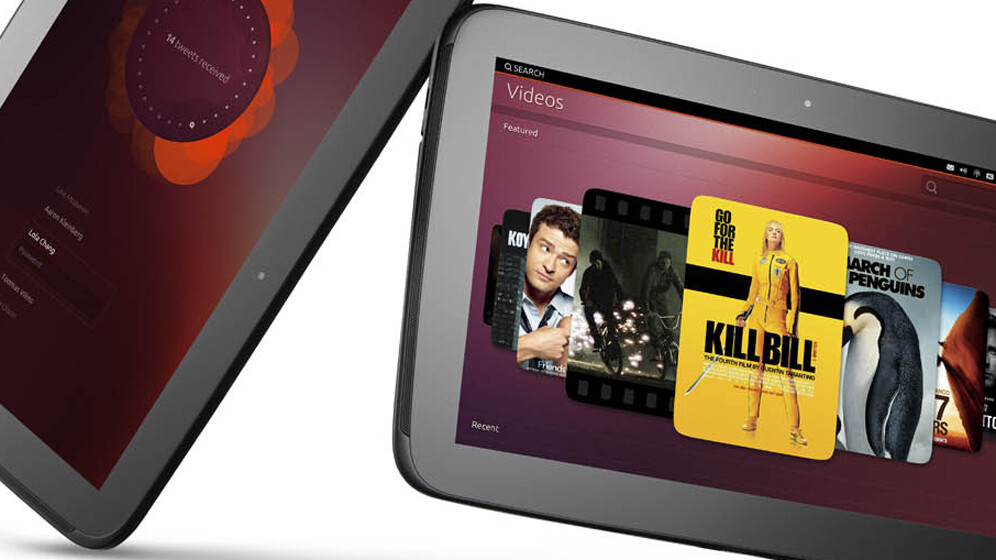
Canonical founder Mark Shuttleworth revealed today that a “very large supplier of silicon to the mobile industry” has committed to Ubuntu on mobile and agreed to optimize the Linux-based operating system for their products.
It follows the reveal of the company’s new tablet-ready Ubuntu interface, which is optimized for touch and uses the device’s screen edges to switch apps and take advantage of system-level functionality.
The backing of a mystery silicon supplier, which Canonical says will be revealed after Mobile World Congress later this month, has “catalyzed” the manufacturing sector and caused a number of OEMs and ODMs to confirm they will support Ubuntu smartphones and tablets, according to Shuttleworth.
When will we be able to use it?
“We are now very confident that Ubuntu will ship on devices in Q1 2014 and we are in discussions at the highest levels with top-tier carriers in North America, Europe and China to get launch partners for those devices,” Shuttleworth added in a briefing call earlier today.
Canonical has published a table on its website for partners, detailing the hardware requirements for an entry-level consumer tablet and a high-end enterprise tablet. Shuttleworth revealed that the company’s current plan is to work with one preferred partner on both a low and high-end device, before having them built by “one or two” manufacturing partners under either their own brand or a carrier brand.
For the release of these dedicated tablets, he also said that they would launch with two carriers in two separate markets – possibly hinting at the North America, China and European markets mentioned earlier for mobile devices generally.
There has been some confusion regarding the release timetable of the mobile interface for smartphones and tablets. Shuttleworh clarified that Ubuntu 13.10, which includes the full entry-level smartphone experience, will go live in October.
“You will be able to take Ubuntu 13.10 and stick it on your Nexus 4, or 5 or 6, or whatever they’re up to by then, and you’ll get the Ubuntu entry-level smartphone experience on that device,” he said.
New smartphones shipping with Ubuntu will come much later though. The delay is due to carrier regulatory testing, and should mean that the new devices go to market in Q1 2014 (he actually said April at one point).
Version 14.04, which doesn’t have a release date yet, will ship with both the integrated tablet and smartphone experience. As with many Windows 8 machines, some of Ubuntu’s partners such as Dell, Lenovo and HP will be shipping desktop PCs and laptops with a touch screen and detachable keyboard.
The tablet experience could therefore arrive much sooner than Q1 2014 on a PC or some kind of convertible latpop-tablet hybrid – but for a dedicated tablet, consumers will have to wait.
Will it be consistent across devices?
Shuttleworth also said that Canonical is already having conversations with carriers and handset manufacturers. He emphasized that neither side has said they want to “recreate the fragmentation of the Android ecosystem” with the Ubuntu interface.
That means that unlike on Android – where the stock version is featured on Google’s Nexus devices, but tweaked elsewhere by hardware manufacturers and carriers – Ubuntu will be left well alone. It should come as a relief to anyone that has experienced the incredible amount of bloatware and inadequate skins shipped with some Android smartphones in the past.
“What [carriers] do want is to be able to tap into services that are relevant for them. So for example, some carriers have content – they commission music and movies – so they want to make that available to the user,” Shuttleworth said.
“In our user experience, what we’ve specifically allowed for is multi-layered stores. So what that means is, a user who got a phone from a carrier can expect that the carrier will choose what content is featured – but if they search for content they will find content from wherever it’s best delivered to them.”
When can I try it out?
Canoncial is releasing a preview of the tablet interface for Google’s Nexus 7 and Nexus 10 tablets this Thursday. A full roll out of the ecosystem is still a long way off, but it’s clear that the company is taking a very different approach to some of its well-established competitors.
For the smartphone market in particular, it just might be enough to compete with Microsoft for the third spot.
Image Credit: Canonical
Get the TNW newsletter
Get the most important tech news in your inbox each week.





